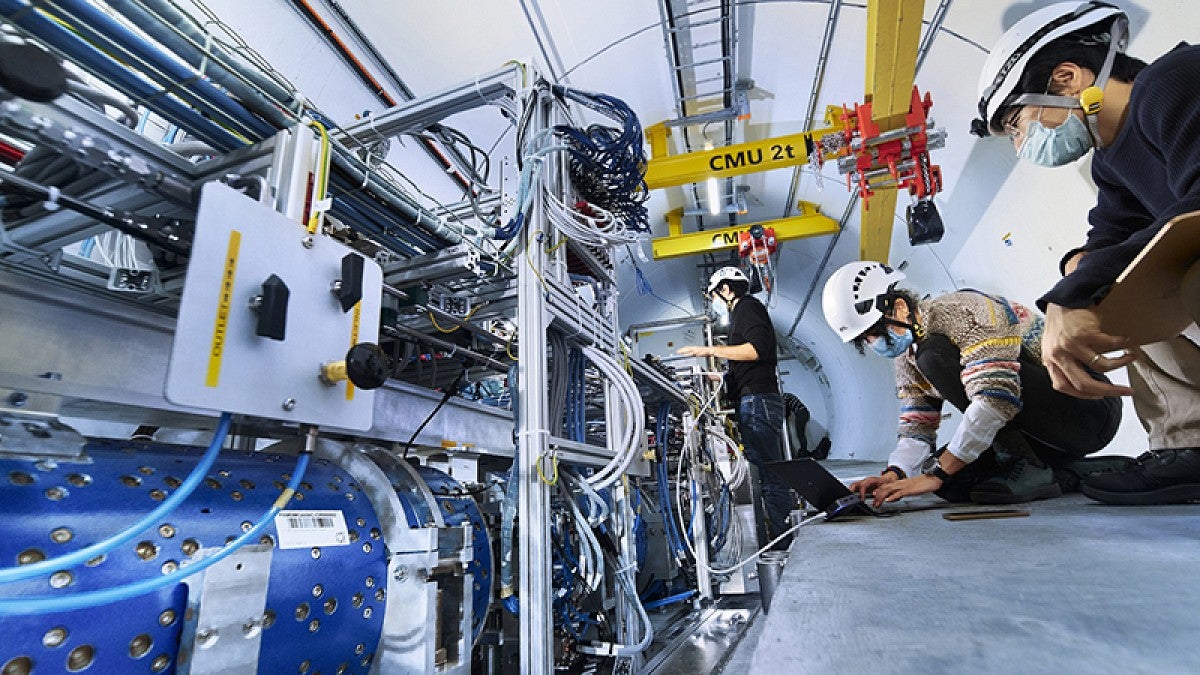For the first time, scientists have detected neutrinos created by a particle collider, and University of Oregon physicists are part of the international team that made the advance.
The discovery opens up a new way to study fundamental building blocks of the universe and answer big questions about the cosmos. Known as FASER, or the Forward Search Experiment, the team’s detector captured high-energy neutrinos generated by the Large Hadron Collider at CERN in Geneva, Switzerland. FASER scientists announced the results March 19 at a conference in Italy.
Neutrinos are the most abundant particle in the universe and are key to our understanding of physics, but they’re extraordinarily hard to study. In addition to being extremely tiny — hundreds of thousands of times lighter than an electron — they barely interact with the matter around them. That makes them difficult to detect.
“This is the first time we've seen neutrinos from any kind of collider experiment,” said UO physicist Eric Torrence, a collaborator on the project. “It’s a whole new era of being able to measure neutrinos by looking at them directly in colliders.”
Torrence is part of the UO’s Department of Physics in the College of Arts and Sciences.
At the Large Hadron Collider, particles such as protons and electrons are smashed together at close to the speed of light, generating many other kinds of particles. The FASER detector is strategically positioned to try to capture the neutrinos generated by those high-energy collisions.
Neutrinos are drowned out by the initial burst of particles generated in the collider, but “FASER is secluded from this explosion of particles,” said Deion Fellers, a graduate student in Torrence’s lab who has been involved in FASER since the project’s early days. While other particles decay or get absorbed shortly after the collision, neutrinos pass ghost-like through rocks to reach the FASER detector.
These are the highest-energy neutrinos ever generated in a lab, filling in a gap in physicists’ understanding of the particles. Measuring the neutrinos and their interactions will allow scientists to see if experimental findings align with what’s predicted by theory and then estimate astrophysical phenomena.
FASER’s bigger goal is finding clues to the nature of dark matter, by exploring other elusive particles called dark photons.
Torrence and Fellers, as well as postdoctoral researcher Daniela Koeck and graduate student Ansh Desai, are part of a 70-person international team with collaborators at 24 universities around the world. That’s a relatively small group by particle physics standards, Torrence said. It’s been built up quickly, too, going from an initial proposal to a fully operational detector producing results in under four years.
The team didn’t find evidence for dark photons in this initial data set, but their hunt is just beginning. Establishing the project and getting these first results “was a real rush,” Torrence said.
This work is supported by the National Science Foundation (award 2110929-PHY), Heising-Simons Foundation, Simons Foundation, and the European Organization for Nuclear Research.
—By Laurel Hamers, University Communications
—Photo: The final elements of the FASER, or Forward Search Experiment, detector are installed in the tunnel housing the Large Hadron Collider. Photo courtesy of CERN.


